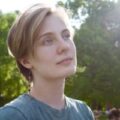Meet four women in California and New York who learned to code for very different reasons – and results!
By Angie Chang (Co-Founder, Women 2.0)
People learn to code for all sorts of reasons, from building their own startup to building on top of their partner’s startup. In the case of a San Francisco-based marketing manager, Kaitlyn Trigger learned to code Python so she could build Lovestagram for her boyfriend – who happens to be one of the co-founders of Instagram. Kaitlyn was a political science major from Yale working in marketing, but wanted to get more technical.
“When I was in high school in Los Angeles, my math teacher introduced me to C++.. I didn’t see how it was relevant to my life, and I didn’t pursue it. After moving to San Francisco and meeting so many entrepreneurial software engineers (including my boyfriend), I realized my mistake! Fortunately, it’s never too late to learn,” said Kaitlyn.
It’s easier than ever to learn to code online with free classes on Coursera, a website co-founded by Stanford professor Daphne Koller to share college courses online from the world’s most elite universities. And then there is Udacity, which offers a great introductory course on Computer Science 101.
Aside from lifelong learning, what really accelerates online learning is hands-on project-based work.
“The most important catalyst for me was having a specific project idea. Working towards the goal of building Lovestagram motivated me to work harder, plus it provided a fun context for some of the ‘drier’ material I was learning,” said Kaitlyn. “While I’m really happy with how Lovestagram turned out, my biggest accomplishment is a very personal one. Finding the courage and the discipline to learn a completely new skill was just as satisfying as having 12,000 people create valentines with Lovestagram.”
Kaitlyn is now working as a Product Manager at TaskRabbit, a startup founded by CEO Leah Busque.
* * *
Skillcrush CEO and co-founder Adda Birnir is a front-end developer in New York. The Yale graduate with degrees in Fine Art and African American Studies is a self-taught developer – with the help of some mentors.
She muses, “From what I can glean from the Instagram story, Kevin Systrom learned to program well enough to build the initial prototype of Burbn, which became Instagram.”
“The key here is not that he ended up CTO of the company, but that he learned enough to get the company started (ie. make a prototype) and had a core understanding of the challenges of creating the product. Even if you don’t end up coding for the rest of the life of your company, you will be a better manager with software development experience under your belt.”
Adda cites Yipit founder Vinicius Vacanti as another entrepreneur who taught himself to program, as well as Tracy Osborn, founder of wedding invitation business WeddingLovely. She taught herself to code in Django to build her prototype before finding a technical co-founder.
* * *

When she lost her startup co-founder and knew that she wouldn’t get my company off the ground if she didn’t just do it myself, she started anew… and found that this time, she could actually pick up programming – in Python this time – and enjoy it.
Tracy picked up as many mentors as possible to bug whenever she had questions, and then started building her app — “I didn’t really do any tutorials verbatim. I was getting something I was excited about to work, even if I didn’t know how, which made programming much more enjoyable.”
She made the first prototype of her website in six weeks – and found her startup co-founder.
* * *Meet Esther Nam, a French Literature and Psychology in college. She took no computer science classes, confessing that “at Berkeley, computer science seemed too intimidating to even try. Then I had a lot of free time right after college, which I spent learning learning Rails for my friend’s startup and really enjoyed that.”
“I used the pickaxe book [for learning programming Ruby] and _why’s Guide to Ruby to learn Ruby and RoR. Then I learned about Django and Python, and learned those. I went to grad school for Library and Archiving, but tried to integrate things I knew as a programmer into projects wherever I could,” she recounted.
Aside from reading resources she found online and learning on a trial-and-error basis doing freelance work for friends and their referrals, Esther started hanging out at local interest groups and meetups for Django and Python.
“Even though my day job had nothing to do with programming, I managed to keep up with emerging trends, etc. I helped start the PyLadies interest group, which eventually landed me a full-time job as a web developer for a mid-sized company in Santa Monica that I enjoy very much,” she said. Esther recently gave a talk at the Python developers conference “PyCon” about exception handling.
Congrats to all these women who learned to code and make things happen for themselves!
Photo credit: Adda Birnir by Alberto Reyes
Women 2.0 readers: Did you teach yourself to code? What were your resources?

